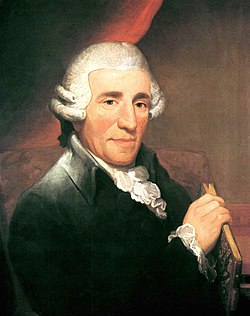| Haydn Symphonies | ||||
|---|---|---|---|---|
 | ||||
| Studio album by | ||||
| Released | April 2017 [1] | |||
| Recorded | 2013 | |||
| Venue | Arlene Schnitzer Concert Hall, Portland, Oregon | |||
| Genre | Classical | |||
| Label | Pentatone | |||
| Oregon Symphony chronology | ||||
| ||||
Haydn Symphonies is an album recorded by the Oregon Symphony under the direction of Carlos Kalmar, released by Pentatone on April 7, 2017. [1] [2] [3] The albums was recorded at Portland, Oregon's Arlene Schnitzer Concert Hall in 2013, and features three symphonies by Joseph Haydn: Symphony No. 53 in D Major ("The Imperial"), Symphony No. 64 in A Major ("Tempora Mutantur"), and Symphony No. 96 in D Major ("The Miracle"). [1]
